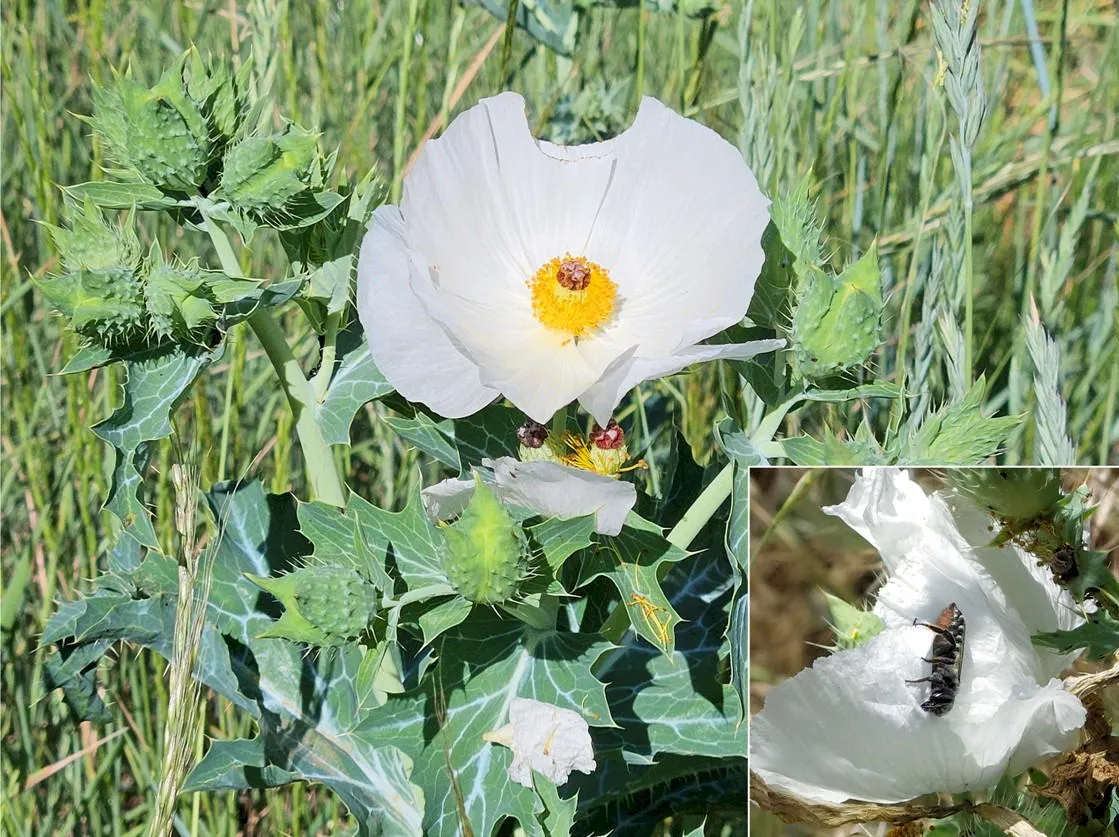By Tom Schweich
Very pretty and very stickery, “Crested Prickly Poppy” — Argemone polyanthemos (Fedde) G.B. Ownbey — is found in all the open spaces of Golden. The stems, leaves, and seed pods of this very pretty flower are so prickly that it is sometimes mistaken for a thistle or a cactus. It also has an orange latex-bearing sap as it can be very sticky.
The genus name Argemone is derived from the Greek “argema,” a reference to the use of a European prickly poppy in medicine. The species name is a combination of the Greek words “poly” (meaning “many”) and “anthemom” (meaning “flowers”). The “Crested” part of its common name refers to the horns or crests on the seed pods.
Prickly poppies grown from Mexican seeds were growing in European gardens when Linneaus (1753) published the first edition of his Species Plantarum, but those were a different species than our prickly poppy. The historical literature is a little unclear, but it appears that the first collection of A. polyanthemos was very likely made by Edwin James, MD, on June 20, 1820, just west of Gothenburg, Nebraska. Unfortunately, James gave it a name that was previously used for a different poppy, and our plant received little recognition. It wasn’t until 1958 that Gerald Ownbey of the University of Minnesota reorganized all the prickly poppies and elevated our prickly poppy to the rank of species.
Our plant is found mostly on the plains and lower foothills from Texas north to Montana. In Colorado it is found on the plains and up against the foothills, with a few collections in the southwest part of the state. Although, one must wonder whether the poppy occurs there naturally or whether it is a garden escapee there.
You may notice in the photograph that there is a semi-circular cutout in the petals on the back side of the flower. Colorado’s native leafcutting bees (Megachile spp., see inset) cut leaves and flower petals and use the pieces to line their nest cells. Colorado State University has an interesting article about leafcutting bees at: https://extension.colostate.edu/topic-areas/insects/leafcutter-bees-5-576/









